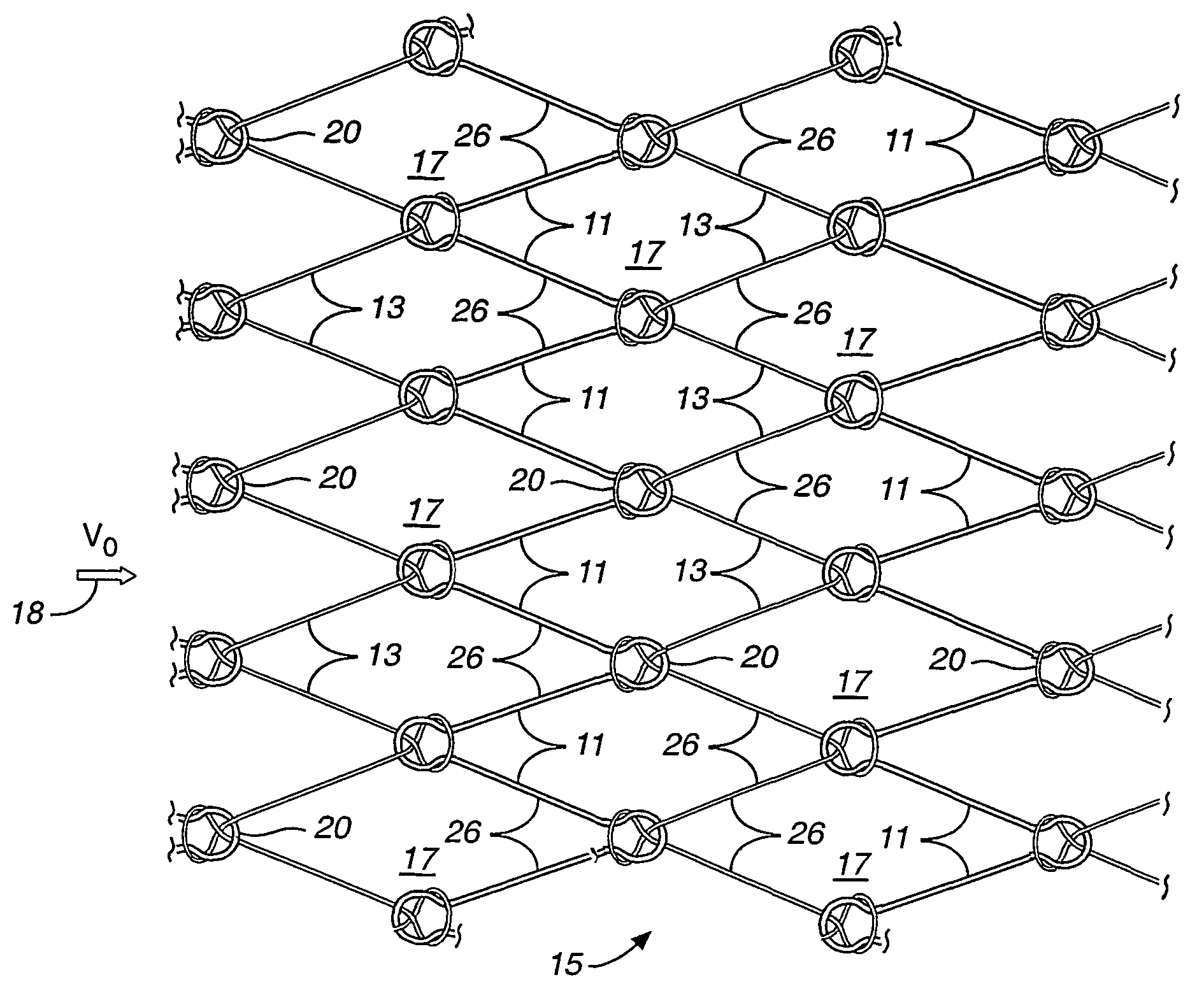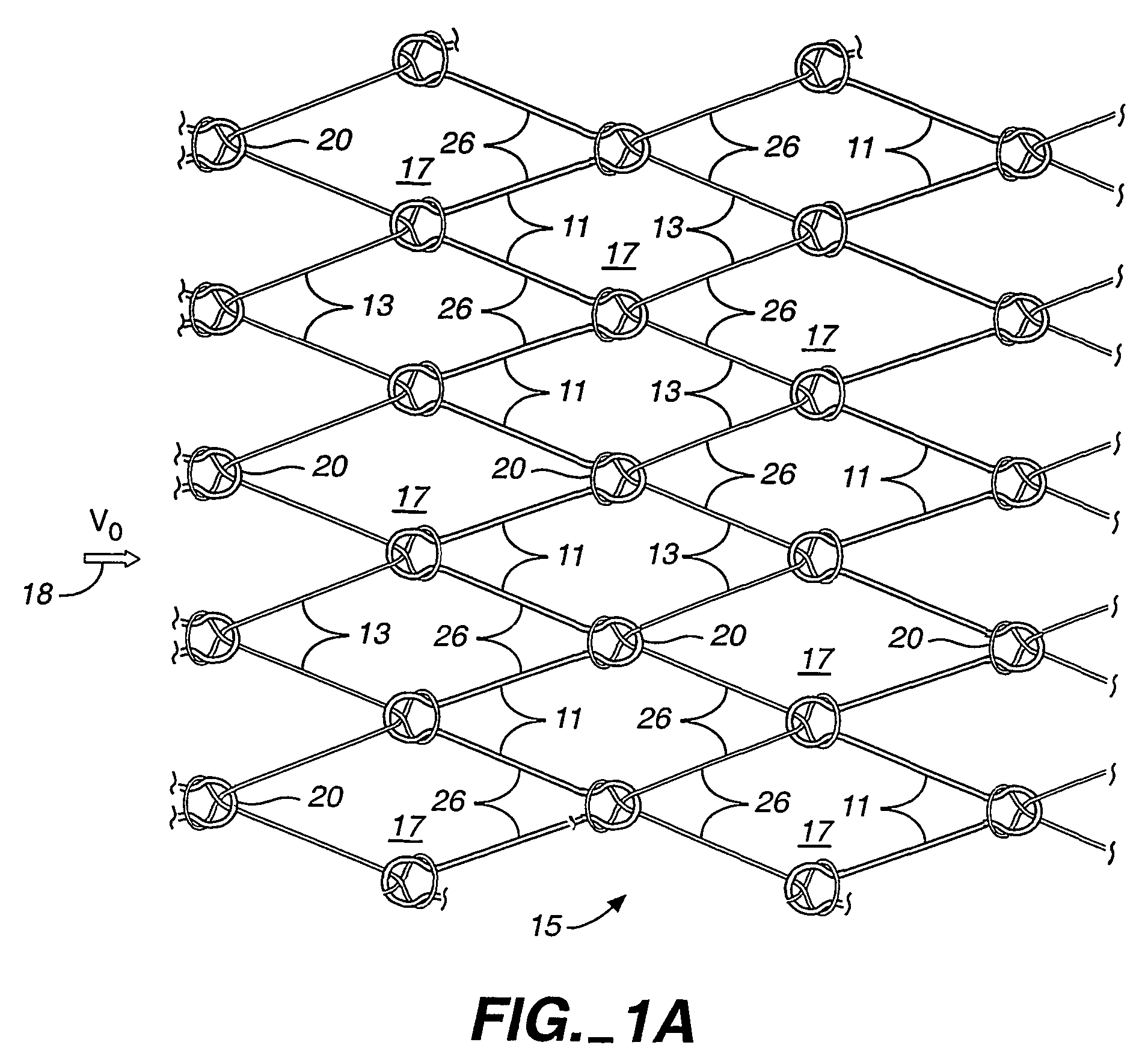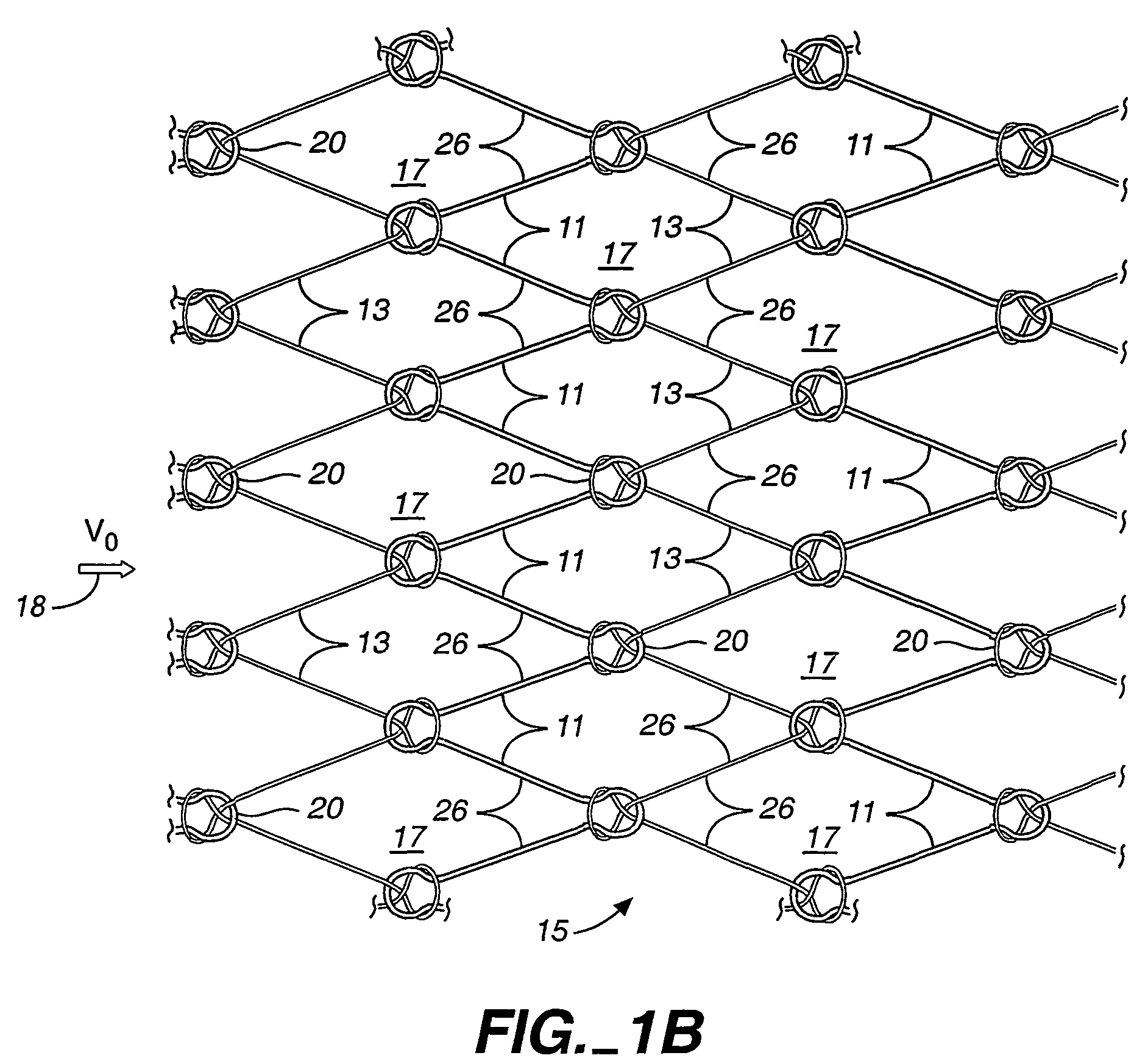Reduced-bulk, enhanced-resilience, lower-drag netting
a technology of reducing weight and reducing drag, applied in the field of netting, can solve the problems of fatigue, increased fuel consumption, and reduced engine life, and achieve the effect of less material, same strength, and reduced drag
- Summary
- Abstract
- Description
- Claims
- Application Information
AI Technical Summary
Benefits of technology
Problems solved by technology
Method used
Image
Examples
Embodiment Construction
[0068]FIGS. 1a and 1b each respectively depict part of a machine-made netting panel in accordance with the present invention that is referred to by the general reference character 15. The back end of trawls are usually assembled using panels 15 of netting of the type depicted in FIG. 1a or 1b.
[0069]The material for netting panels 15 depicted in FIGS. 1a and 1b is knit in a pattern that is identical to a knitting pattern used for conventional machine-made netting in which the same twine of a pair of immediately adjacent twines always forms the loop while the other twine of a pair always forms the bight. Consequently, conventional machines which are capable of making either of the two (2) types of netting which possess the preceding characteristic may be used to knit netting in accordance with the present invention. However, netting in accordance with the present invention is preferably made using a conventional machine which between immediately adjacent knots alternates the directio...
PUM
 Login to View More
Login to View More Abstract
Description
Claims
Application Information
 Login to View More
Login to View More - R&D
- Intellectual Property
- Life Sciences
- Materials
- Tech Scout
- Unparalleled Data Quality
- Higher Quality Content
- 60% Fewer Hallucinations
Browse by: Latest US Patents, China's latest patents, Technical Efficacy Thesaurus, Application Domain, Technology Topic, Popular Technical Reports.
© 2025 PatSnap. All rights reserved.Legal|Privacy policy|Modern Slavery Act Transparency Statement|Sitemap|About US| Contact US: help@patsnap.com



